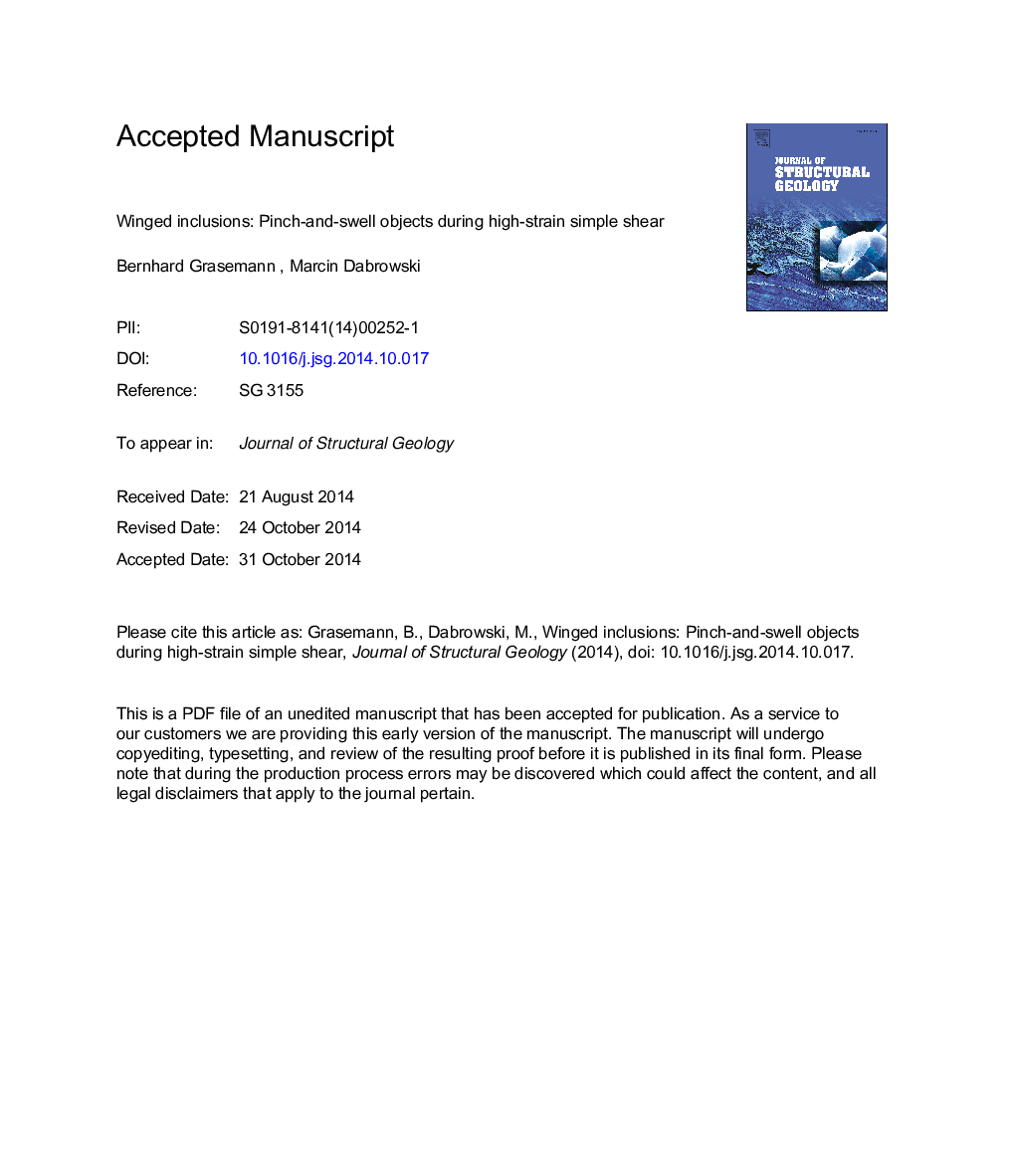| Article ID | Journal | Published Year | Pages | File Type |
|---|---|---|---|---|
| 6444812 | Journal of Structural Geology | 2015 | 65 Pages |
Abstract
In this study, we compare natural examples of isolated pinch-and-swell objects, which have been deformed in simple shear, with results of high-strain numerical models. Such structures, which have geometrical similarities with δ-clast systems and rolling structures, have been called winged inclusions. We suggest a new mechanical explanation for the evolution of winged inclusions, which form when pinch-and-swell shaped objects consisting of a core and pre-existing wings rotate out of the shear plane. The viscosity ratio, the stress exponent, and the shape of the winged inclusion have a significant influence on the rotation rate. The rotational behaviour of winged inclusions differs significantly from the rotational behaviour of simple elliptical objects with comparable aspect ratios. During the early stages of formation, winged inclusions may resemble mirror images of sigmoids and misinterpretations may lead to a wrong determination of the shear sense. During progressive shear to large strains, the structures may be approximately described as consisting of a pulsating rotating core and thinning wings that rotate with different rates. During rotation of the structure, the core of the winged inclusions records an overall decrease of the aspect ratio influencing the rotation rate of the inclusion. The wings are subject to ptygmatic folding, when they rotate through the field of instantaneous shortening and may unfold again in the field of instantaneous stretching. During ongoing shearing, the wings on both sides of the core rotate with the core, may change their positions and finally unfold after rotation about 180° resulting again in a pinch-and-swell shaped object. Therefore, winged inclusions record ambiguous information about the finite strain. Rotating winged inclusions create a significant flow perturbation in the matrix resulting in nucleation of folds, refolding and propagation of shear zones. Rootless intrafolial folds with opposing closures have strong geometrical similarities with winged inclusions and we therefore speculate that the formation of winged inclusions might be an efficient mechanism to produce rootless intrafolial folds.
Related Topics
Physical Sciences and Engineering
Earth and Planetary Sciences
Geology
Authors
Bernhard Grasemann, Marcin Dabrowski,
